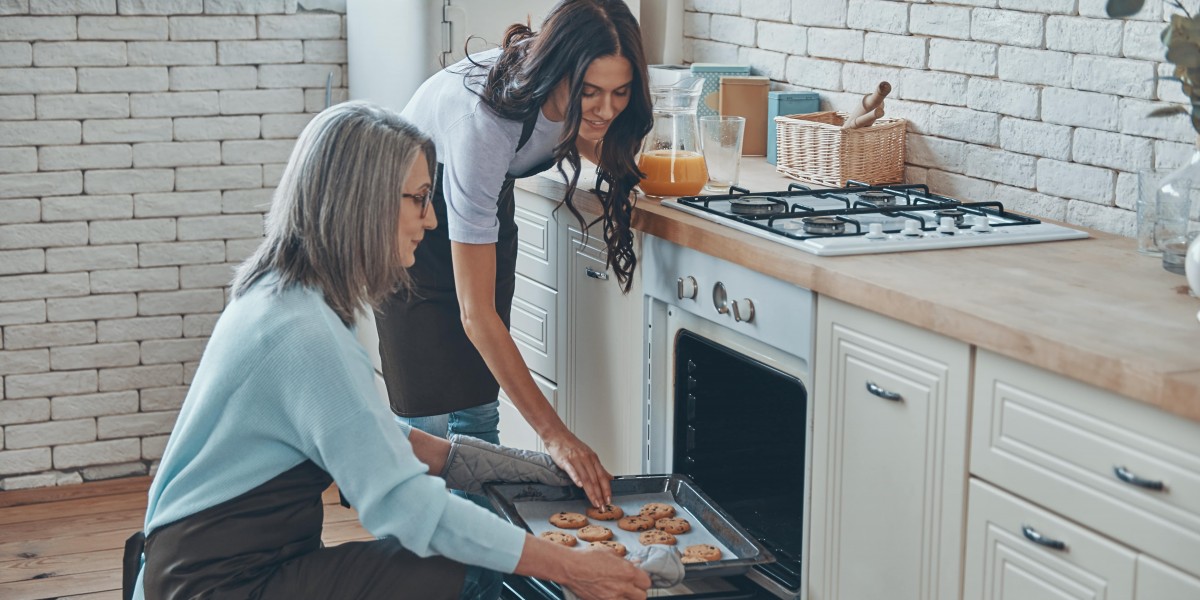
The Comprehensive Guide to Built-In Ovens: Features, Benefits, and FAQs
Built-in ovens are a popular choice for modern cooking areas, offering flexibility, efficiency, and a smooth design that incorporates flawlessly into cabinetry. This post will explore the various elements of built-in ovens, including their features, advantages, setup alternatives, upkeep suggestions, and answers to commonly asked concerns.
What is a Built-In Oven?
A built-in oven is created to be installed within kitchen cabinets and is offered in various setups, such as single or double ovens. Unlike freestanding ovens, built-in models offer a structured appearance and use more versatility in kitchen style. They are available in electric, gas, and steam choices, accommodating a series of cooking choices.
Functions of Built-In Ovens
Built-in ovens are packed with features that boost cooking experiences. Here are a few of the most common functions to think about:
| Feature | Description |
|---|---|
| Self-Cleaning | Lots of models include a self-cleaning function that burns residue at high temperature levels, simplifying maintenance. |
| Convection Cooking | This feature uses a fan to circulate hot air, cooking food more uniformly and rapidly. |
| Smart Technology | Some ovens come geared up with Wi-Fi connection, allowing users to manage the oven remotely through smartphone. |
| Numerous Cooking Modes | Consist of choices such as baking, broiling, roasting, and air frying, providing adaptability for different meals. |
| Temperature level Probe | Monitors the internal temperature level of food, guaranteeing perfectly prepared meals every time. |
| Smooth Design Options | Readily available in various surfaces (stainless-steel, SIA 60cm Black Built-In Multi-Function Oven, white) to match kitchen design. |
Advantages of Built-In Ovens
The setup of a built-in oven brings numerous advantages to any Upgrade Your Kitchen: WILLOW WOF60DSS Single Oven
- Space Efficiency: Built-in ovens maximize kitchen space, providing a clean and organized look without sacrificing functionality.
- Boosted Cooking Performance: With advanced functions like convection cooking and precise temperature controls, built-in ovens typically outperform traditional designs.
- Style Flexibility: These ovens can be installed at eye level, enabling for simple access without flexing down, which can be especially helpful for individuals with physical constraints.
- Enhanced Resale Value: A well-designed kitchen with high-quality built-in appliances might appeal to potential purchasers, enhancing overall property value.
- Personalization Options: Many brands provide adjustable designs that fit the specific measurements and visual of individual kitchen areas.
Setup Options
When choosing a built in oven uk-in oven, comprehending the setup alternatives is important. Here are the most common configurations:
Single Built-In Oven: Ideal for smaller kitchens, these systems use enough area to cook a range of dishes concurrently, ideal for daily cooking.
AEG SurroundCook Double Oven - 61L Capacity Built-In Oven: Best suited for avid cooks and large households, double ovens enable simultaneous cooking at 2 different temperatures, suitable for meals that require different cooking approaches.
Combination Steam and Oven: A hybrid solution that combines the benefits of standard baking with steam cooking. This option is outstanding for maintaining moisture in foods, making it best for baking bread or roasting meats.
Upkeep Tips for Built-In Ovens
Keeping a built-in oven is important for its longevity and optimal performance. Here are some practical upkeep suggestions:
Regular Cleaning: Use the self-cleaning function when necessary, and wipe down the outside and interior surface areas routinely to avoid grease buildup.
Examine the Seals: Inspect the oven door seals for any wear or damage to guarantee correct insulation and cooking effectiveness.
Temperature level Calibration: Occasionally check the temperature level precision using an oven thermometer, specifically if cooking times appear longer than usual.
Ventilation: Ensure adequate ventilation around the oven to prevent getting too hot, particularly for built-in models that might be surrounded by cabinets.
FAQs About Built-In Ovens
1. Are built-in ovens more costly than freestanding models?Yes, built-in ovens tend to be more pricey due to their style, installation requirements, and extra features. However, their benefits can justify the cost in the long run.
2. Can you install a built-in oven yourself?While some convenient people might try to set up a built-in oven, it is recommended to work with a professional to ensure correct setup, ventilation, and safety standards.
3. What is the typical life-span of a built-in oven?The typical life expectancy of a built-in oven is around 10 to 15 years, depending upon usage and upkeep. Routine care can help extend its durability.
4. Are built-in ovens built in energy effective?Lots of modern-day built-in ovens are developed with energy effectiveness in mind, integrating functions like insulation and exact temperature level controls that may reduce energy usage compared to older models.
5. Can a built-in oven be repaired if it breaks?Yes, built-in ovens can often be repaired. It is recommended to get in touch with a certified professional for diagnoses and repair work to ensure security and compliance with service warranty agreements.
Built-in ovens are an outstanding addition to any contemporary kitchen Renovation, offering a combination of design, performance, and advanced cooking features. With the ideal knowledge about their functions, advantages, and upkeep, house owners can make educated options to improve their cooking experiences. As kitchen style patterns continue to evolve, the built-in oven stays a staple for those looking to blend visual appeals with efficiency in their cooking areas.






